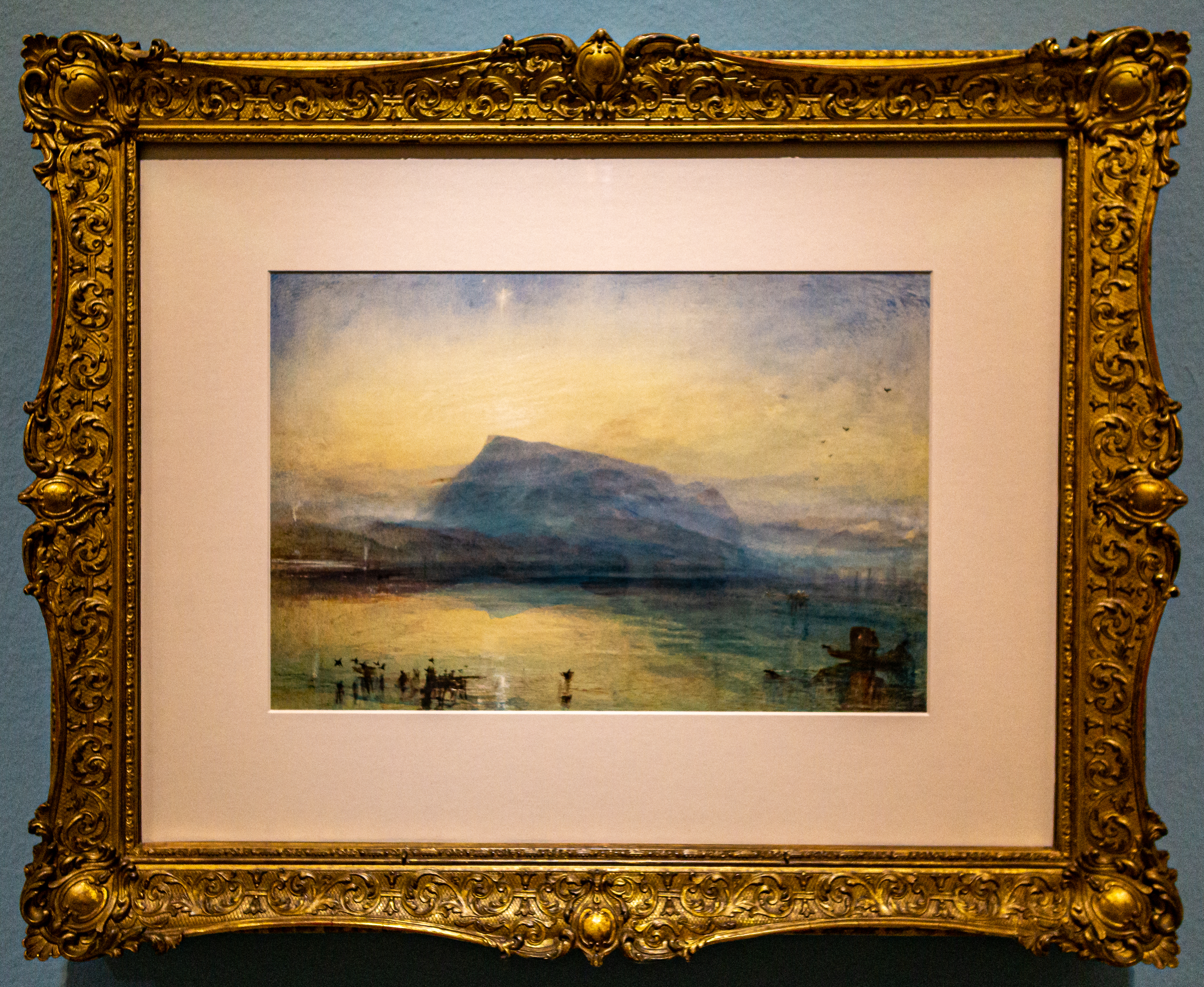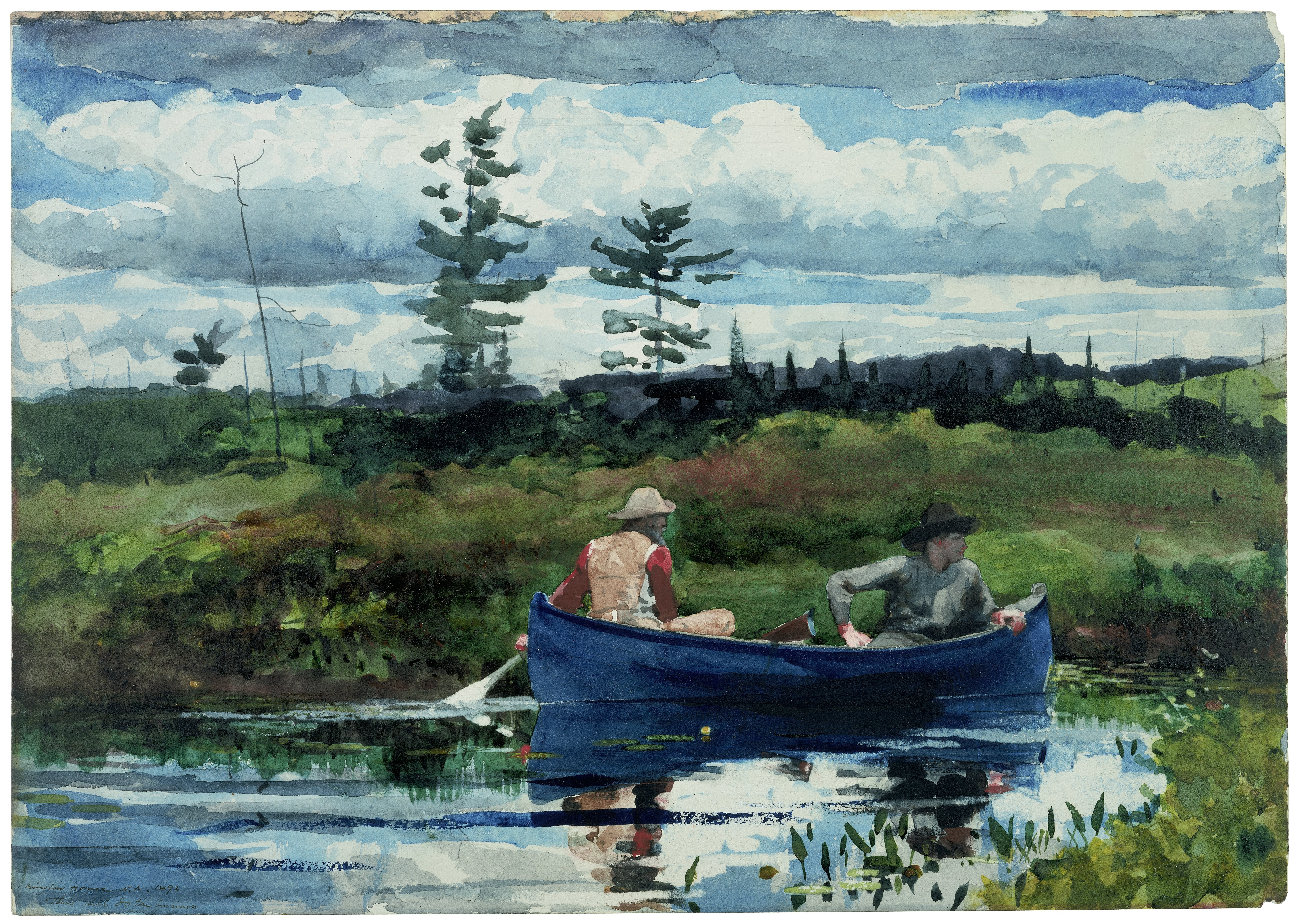Introduction: The Spirit of Landscape in Watercolor
 |
| Night Landscape with Gothic Ruins Lluís Rigalt, Public domain, via Wikimedia Commons |
The interplay of pigment, water, and paper creates effects that mimic natural phenomena—mist, light, clouds, reflections, and atmosphere—with an ease unmatched by oils or acrylics.
From the 16th century onward, watercolor became a favored medium for topographical studies, travel sketches, and later, full-fledged artistic masterpieces. Its fluidity lends itself to capturing transient moods of weather, the shimmer of dawn, or the fading glow of twilight. In the hands of masters, watercolor landscapes are not only representations of place but meditations on time, memory, and the natural world’s sublime presence.
This essay explores the art of landscape in watercolor, highlighting seven landmark public-domain watercolor landscapes, while also discussing the accessibility of the medium, how these works are valued and displayed, and how one may achieve mastery in this luminous art form.
The Easiness of Using Watercolor for Landscapes
Watercolor appeals to both beginners and masters for several reasons, particularly in landscape painting:
-
Portability – Artists can carry a compact set of paints and brushes outdoors, enabling them to capture scenes directly on-site (plein air).
-
Spontaneity – Quick-drying pigments allow rapid impressions of fleeting light, shifting clouds, or moving water.
-
Natural Effects – Watercolor easily suggests mist, rain, reflections, or atmosphere through simple washes.
-
Minimal Tools – Only pigments, water, brushes, and paper are required.
-
Accessibility – Even novices can achieve beautiful effects quickly, while masters harness its subtleties for profound results.
Yet, watercolor is also known as an “unforgiving” medium. Mistakes are difficult to erase, and overworking dulls the paper’s vibrancy. However, in landscape painting, this very unpredictability is often a virtue. The accidental flow of water can resemble natural textures—rocks, foliage, or skies—better than deliberate strokes. For landscapes, watercolor feels almost like collaborating with nature itself.
Seven Masterpieces of Watercolor Landscape Painting
1. Albrecht Dürer – View of Arco (c. 1495)
 |
| View of Arco watercolor paint Albrecht Dürer, Public domain, via Wikimedia Commons |
Executed during his travels, this watercolor demonstrates not only Dürer’s keen eye for detail but also his innovative use of the medium as more than mere sketching.
Dürer employs delicate washes to capture the rugged texture of the mountain and the architectural solidity of the fortress. The foreground is loosely suggested, while the sky glows with soft transparency.
His use of watercolor transcends documentation; it conveys mood and place with immediacy. The painting feels both topographical and poetic, foreshadowing landscape’s future as an independent genre.
At a time when oil dominated major art, Dürer’s watercolor landscapes were groundbreaking. They allowed him to work quickly outdoors, recording impressions with speed and accuracy. Today, View of Arco is celebrated not only for its beauty but for its role in establishing watercolor as a legitimate medium for serious art.
Preserved in public collections, it is valued for both historical innovation and artistic quality, showing that even five centuries ago, watercolor was already unlocking landscape’s spiritual power.
2. J. M. W. Turner – The Blue Rigi: Sunrise (1842)
 |
| The Blue Rigi, Sunrise Watercolor on paper J. M. W. Turner, Public domain, via Wikimedia Commons |
Joseph Mallord William Turner elevated watercolor landscape to heights unmatched in his era. The Blue Rigi: Sunrise portrays the Swiss mountain bathed in the first light of dawn, its silhouette mirrored in the still waters of Lake Lucerne.
Turner used broad, translucent washes to capture the quiet majesty of the scene. The palette is restrained—soft blues, pinks, and yellows—but the effect is radiant. The mountain rises ethereal, while the faint outlines of boats and figures anchor the grandeur in human scale. The interplay of reflection and atmosphere exemplifies watercolor’s ability to suggest the immaterial qualities of nature.
What makes The Blue Rigi so profound is its evocation of the sublime. Turner transforms a landscape into a meditation on light and infinity. His handling of watercolor is masterful: precise enough to define form yet loose enough to evoke mystery.
This work is among the most celebrated watercolors in the world, housed in major collections and valued in the millions. It demonstrates that watercolor landscapes, once considered minor, could achieve the same depth and gravitas as oil masterpieces.
3. John Constable – Stonehenge (1835)
 |
| Stonehenge 1835 John Constable, Public domain, via Wikimedia Commons |
His Stonehenge is a dramatic landscape that portrays the ancient monument under a stormy sky, using watercolor to heighten mood.
Constable applied washes of gray, blue, and brown to convey turbulent clouds sweeping over the plain.
The megaliths loom dark and solemn, their forms defined with strong contrasts of wash and dry brush. A rainbow arcs faintly in the distance, a symbol of hope amid the storm.
The immediacy of watercolor allowed Constable to emphasize transience. The shifting weather, the brooding stones, the vastness of sky and land—all are conveyed with an economy of means that watercolor uniquely enables. Unlike oils, which require careful layering, watercolor let Constable capture the monument’s spirit quickly and directly.
Today, Stonehenge is treasured as one of Constable’s most powerful late works. It reveals how watercolor could be more than a tool for sketching; it could communicate grandeur, melancholy, and awe with unparalleled efficiency.
4. Winslow Homer – The Blue Boat (1892)
 |
| The Blue Boat watercolor painting Winslow Homer, Public domain, via Wikimedia Commons |
Winslow Homer, the great American watercolorist, produced some of the most beloved marine landscapes in art history. The Blue Boat depicts two men rowing on a calm lake, surrounded by dense, sunlit foliage.
Homer’s genius lies in his handling of water and light. The surface of the lake shimmers with translucent washes of blue and green, layered to suggest depth and reflection. The figures and boat are painted with stronger pigments, creating contrast and focus. The trees dissolve into loose washes, conveying both mass and atmosphere without overworking detail.
This watercolor embodies both realism and poetry. It captures not just the look of the scene but the feel of a summer’s day—still, reflective, quietly alive. Homer used the speed and freshness of watercolor to record impressions with immediacy, a quality impossible to replicate in oil.
Highly valued today, Homer’s watercolors are displayed in leading American museums, where they are celebrated as national treasures. The Blue Boat in particular represents the balance of human presence and natural grandeur, showing the power of watercolor to evoke emotion through landscape.
5. Paul Cézanne – Mont Sainte-Victoire (c. 1900, watercolor)
Paul Cézanne’s repeated studies of Mont Sainte-Victoire culminated in some of the most important modern landscapes, including watercolors. In one version, Cézanne reduces the mountain to geometric planes, using transparent washes of blue, green, and ochre to build form.
Unlike earlier watercolors that aimed for atmospheric detail, Cézanne’s work is analytical. He leaves large portions of the paper exposed, letting light become part of the composition. The washes are not blended but juxtaposed, creating a patchwork of color that suggests solidity while retaining transparency.
This approach demonstrates watercolor’s capacity for structural investigation. Cézanne sought to “treat nature in terms of the cylinder, the sphere, and the cone,” and watercolor allowed him to explore this vision with immediacy. The landscape becomes less a picture of a place and more an exploration of form and perception.
Today, Cézanne’s watercolors of Mont Sainte-Victoire are considered cornerstones of modern art, influencing Cubism and beyond. Displayed in major museums, they are prized for their bold simplicity and intellectual depth. They show that watercolor landscapes could be vehicles not only of beauty but of radical innovation.
6. John Singer Sargent – Venetian Canal (c. 1902)
John Singer Sargent, renowned for portraiture, turned to watercolor during travels, producing luminous landscapes. In Venetian Canal, he captures Venice’s architecture and reflections with dazzling spontaneity.
Sargent used quick washes to suggest the movement of water, while architectural forms are defined with confident strokes. The light of Venice—glittering on water, bouncing off stone—comes alive through his fluid handling. Rather than detailing every feature, he allows watercolor to blur, shimmer, and dissolve, mimicking the very atmosphere of the city.
This landscape exemplifies watercolor’s unique power: it thrives on looseness. The reflections in the canal are not meticulously rendered but flow naturally from the movement of pigment in water. The viewer feels the place rather than reads it.
Displayed in leading collections, Sargent’s Venetian watercolors are prized for their freshness. They represent a freedom absent from his formal oil commissions, showing how watercolor allowed even established masters to rediscover play, immediacy, and joy in painting landscapes.
7. Edward Lear – View of the Pyramids of Giza (1853)
Edward Lear, known for both his nonsense poetry and his travel sketches, created luminous watercolor landscapes during his journeys. His View of the Pyramids of Giza demonstrates how watercolor could capture both monumentality and atmosphere.
Lear depicts the pyramids rising from the desert with washes of ochre and sienna, their forms stark against a pale blue sky. The vastness of the desert is suggested with broad washes, while tiny figures in the foreground provide a sense of scale. The airiness of watercolor conveys the shimmering heat and expanse of the scene.
Unlike oils, which often emphasized detail, watercolor here communicates space and mood with economy. Lear uses translucency to suggest distance, allowing the pyramids to recede into atmospheric perspective. The work feels both accurate and poetic, a memory of place rather than a literal record.
Lear’s travel watercolors are treasured today not only for their beauty but as historical documents of 19th-century journeys. Displayed in museums and collections, they are valued for capturing the wonder of foreign landscapes with freshness and immediacy.
The Value and Display of Watercolor Landscapes
Watercolor landscapes by masters such as Turner, Constable, Homer, and Cézanne are among the most prized works in museum collections worldwide. Their monetary value can reach extraordinary levels—Turner’s watercolors, for instance, have sold for millions—but beyond the market, they hold cultural and historical significance as records of both place and artistic innovation.
Because watercolor pigments are sensitive to light, these works are displayed under controlled conditions. Museums rotate them periodically, limiting exposure to preserve vibrancy. This fragility adds to their aura: to see a watercolor landscape in person is often a rare privilege.
Collectors and institutions value them for their intimacy, spontaneity, and sense of immediacy. Unlike oils, which can appear monumental, watercolors often feel personal—like a direct glimpse into the artist’s encounter with nature.
Mastery in Watercolor Landscape Painting
To achieve mastery in watercolor landscapes, an artist must balance control with openness to chance:
-
Understand Water Control – Practice washes, gradients, and timing.
-
Study Light and Atmosphere – Observe how watercolor mimics natural effects like mist, reflections, or clouds.
-
Work Plein Air – Painting outdoors sharpens sensitivity to fleeting changes in light and weather.
-
Use Layers Wisely – Transparent glazing builds depth while preserving luminosity.
-
Preserve White Paper – Unpainted areas serve as highlights and light sources.
-
Accept Accidents – Watercolor thrives on spontaneity; blooms and drips often enhance landscapes.
-
Consistent Practice – Daily sketching from nature builds fluency and confidence.
Conclusion
Watercolor landscape painting unites simplicity and profundity. From Dürer’s early alpine views to Turner’s sublime sunrises, from Constable’s stormy megaliths to Homer’s shimmering lakes, from Cézanne’s structural mountains to Sargent’s luminous canals and Lear’s vast deserts, watercolor has proven itself a medium of immense power and versatility.
Its ease of use—requiring only pigment, water, and paper—makes it accessible to all. Yet its transparency and spontaneity challenge the artist to balance control with intuition. Valued in museums and collections worldwide, watercolor landscapes remain treasured for their freshness, fragility, and capacity to reveal both the external world and the inner vision of the artist.
For those who seek mastery, watercolor landscapes offer a lifelong journey: a dialogue with nature, light, and the poetry of water itself.